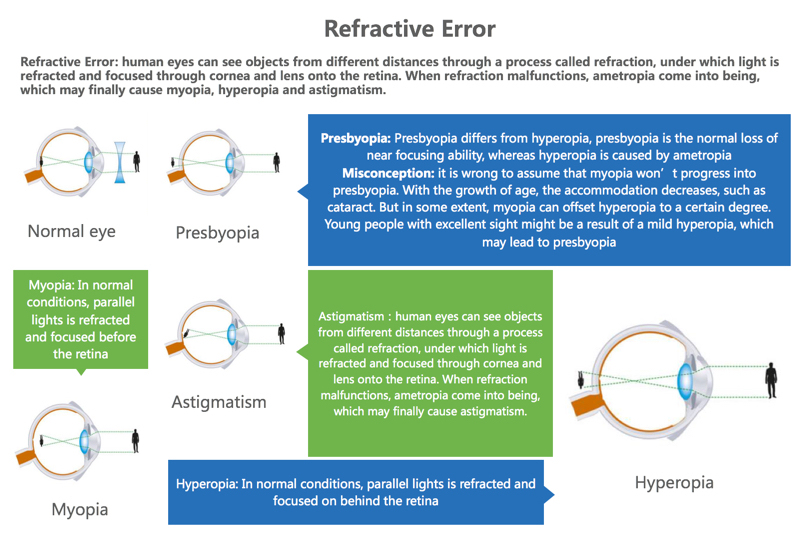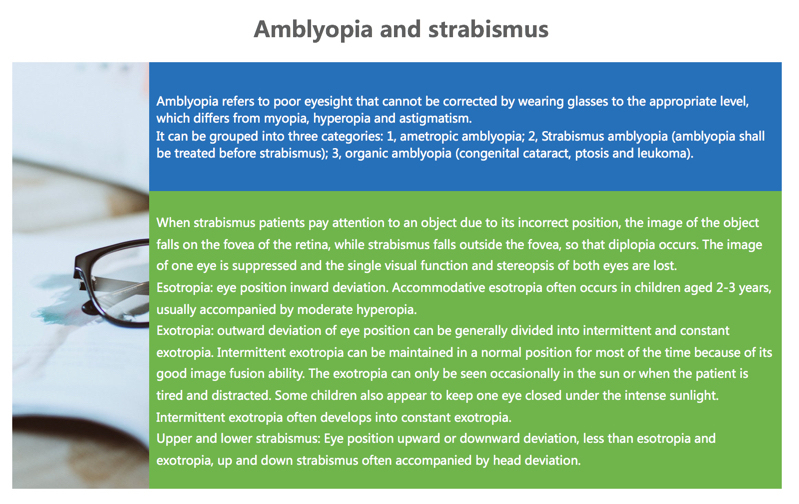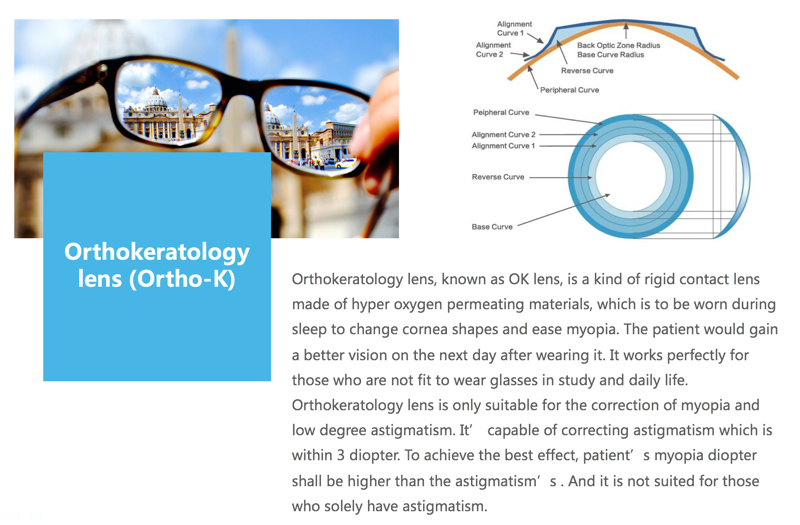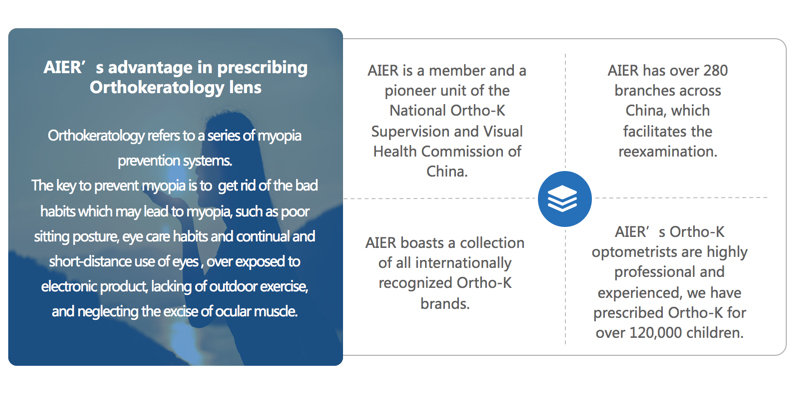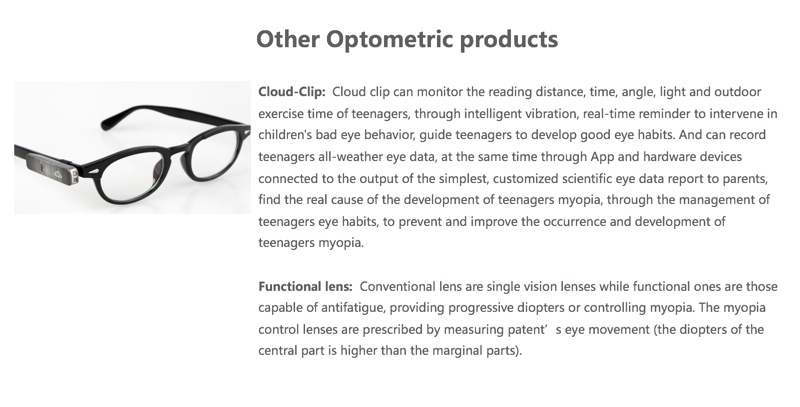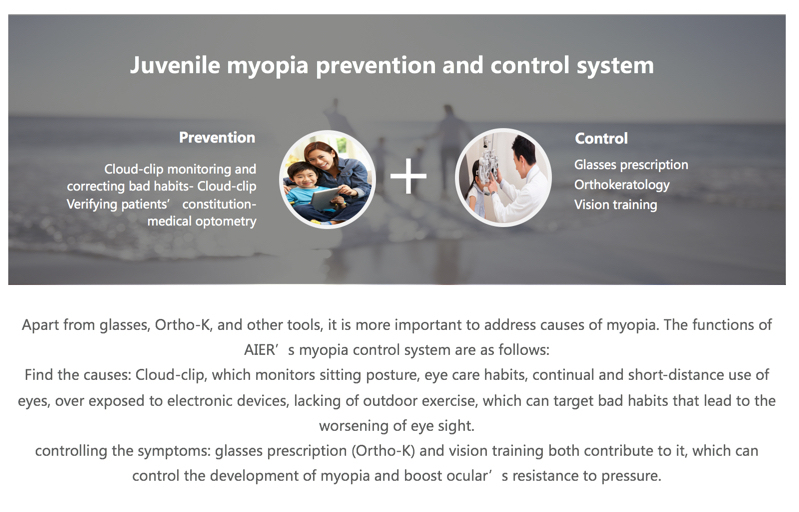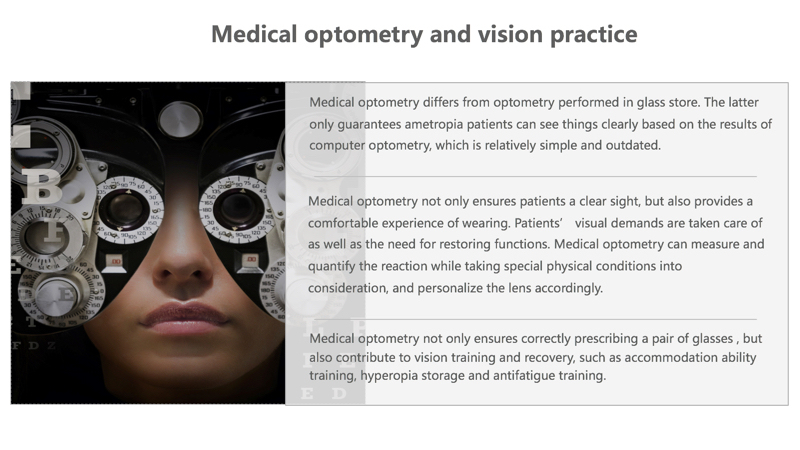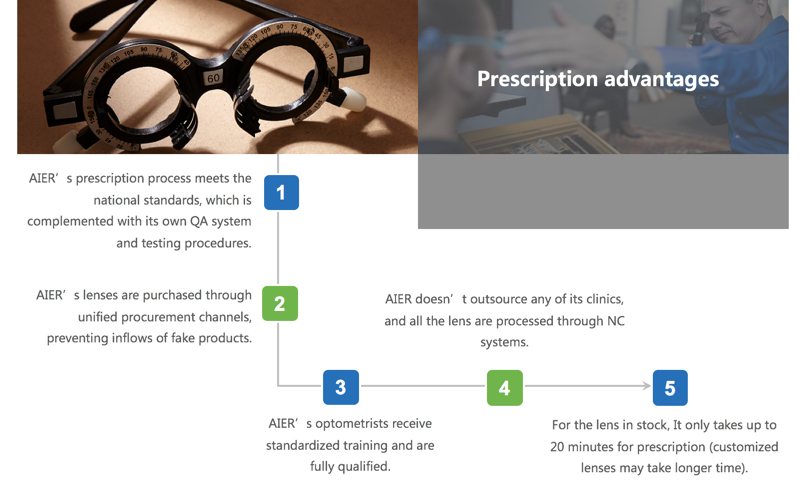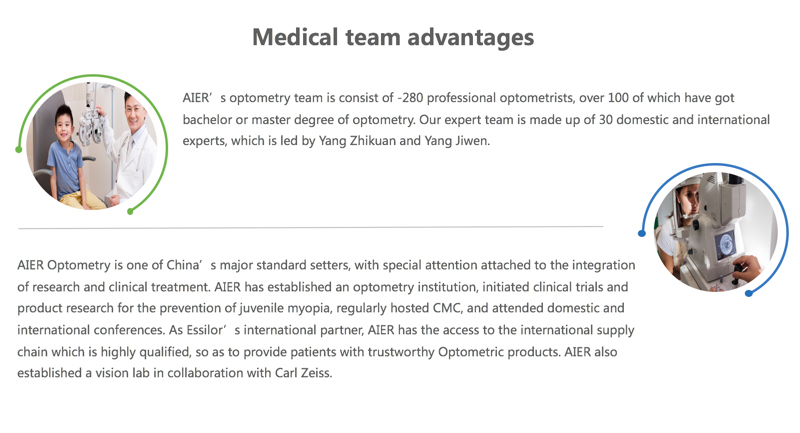Optometry
2022-11-24 17:20:20
Refractive Error: human eyes can see objects from different distances through a process called refraction, under which light is refracted and focused through cornea and lens onto the retina. When refraction malfunctions, ametropia come into being, which may finally cause myopia, hyperopia and astigmatism. Presbyopia: Presbyopia differs from hyperopia, presbyopia is the normal loss of near focusing ability, whereas hyperopia is caused by ametropia
Misconception: it is wrong to assume that myopia won’t progress into presbyopia. With the growth of age, the accommodation decreases, such as cataract. But in some extent, myopia can offset hyperopia to a certain degree. Young people with excellent sight might be a result of a mild hyperopia, which may lead to presbyopia Astigmatism:human eyes can see objects from different distances through a process called refraction, under which light is refracted and focused through cornea and lens onto the retina. When refraction malfunctions, ametropia come into being, which may finally cause astigmatism. Hyperopia: In normal conditions, parallel lights is refracted and focused on behind the retina Myopia: In normal conditions, parallel lights is refracted and focused before the retina
Amblyopia refers to poor eyesight that cannot be corrected by wearing glasses to the appropriate level, which differs from myopia, hyperopia and astigmatism.
It can be grouped into three categories: 1, ametropic amblyopia; 2, Strabismus amblyopia (amblyopia shall be treated before strabismus); 3, organic amblyopia (congenital cataract, ptosis and leukoma). When strabismus patients pay attention to an object due to its incorrect position, the image of the object falls on the fovea of the retina, while strabismus falls outside the fovea, so that diplopia occurs. The image of one eye is suppressed and the single visual function and stereopsis of both eyes are lost.
Esotropia: eye position inward deviation. Accommodative esotropia often occurs in children aged 2-3 years, usually accompanied by moderate hyperopia.
Exotropia: outward deviation of eye position can be generally divided into intermittent and constant exotropia. Intermittent exotropia can be maintained in a normal position for most of the time because of its good image fusion ability. The exotropia can only be seen occasionally in the sun or when the patient is tired and distracted. Some children also appear to keep one eye closed under the intense sunlight. Intermittent exotropia often develops into constant exotropia.
Upper and lower strabismus: Eye position upward or downward deviation, less than esotropia and exotropia, up and down strabismus often accompanied by head deviation.
Orthokeratology lens, known as OK lens, is a kind of rigid contact lens made of hyper oxygen permeating materials, which is to be worn during sleep to change cornea shapes and ease myopia. The patient would gain a better vision on the next day after wearing it. It works perfectly for those who are not fit to wear glasses in study and daily life. Orthokeratology lens is only suitable for the correction of myopia and low degree astigmatism. It’ capable of correcting astigmatism which is within 3 diopter. To achieve the best effect, patient’s myopia diopter shall be higher than the astigmatism’s . And it is not suited for those who solely have astigmatism.
RGP is oxygen-permeable contact lens. which is suited for correcting severe myopia and irregular astigmatism. In some extent, It is secure and works well for patients who have congenital cataract, early stage keratoconus. Meanwhile it works effectively for controlling myopia. It is suggested to be worn in the daytime so as to solve visual problems.
